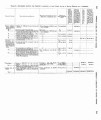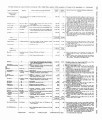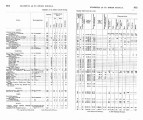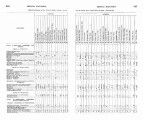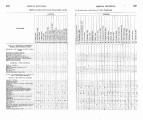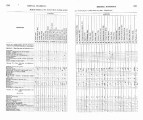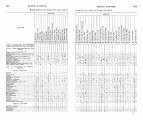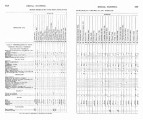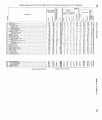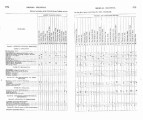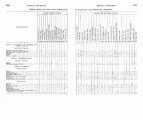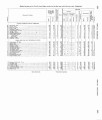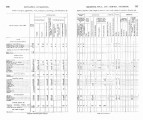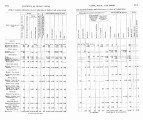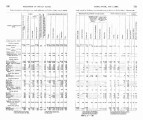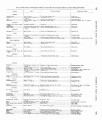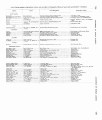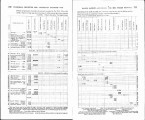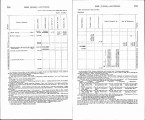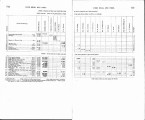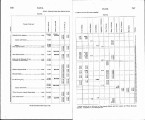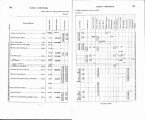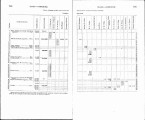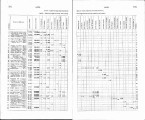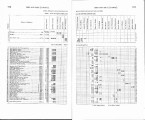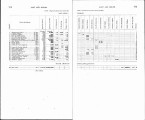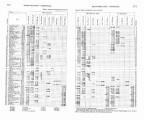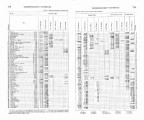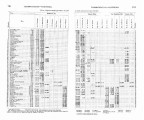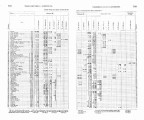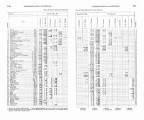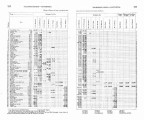| OCR Text |
REPORT OF SUPERINTENDENT OF INDIAN SCHOOLS. 393 also a boy working at the bench. Harness making: A gold mounted + set of harness was in thedisplay; two "hand made" sets of single har-ness, two sets of work harness, and halters. bridles, straps, and con-siderable ornamental handwork. 011e set of harness was made by invisible stitch. Two boys were working at the trade, cuttiug and ma,king harness. Shoernaking: Two boys cutting ar~d making shoes. A display of faucy and plain shoes, consisting of congress, kips, fine ladies' shoes, and the shoes worn by the pnpils in the school. Forty pairs of shoes were 011 display. Tailoriug: Eightsuits of clotl~esofd if-fereut patterns, made by pnpils, were shown. A boy was at work cut-ting a ~ m~adkin g garmeuts. The tailor boys made a fine display of pants, vests, aod fancy sewing. Printing: The school paper, Pipe of Peace. was being ((set upn by the printing-office detail. Three boys were at work. 'Yhe farm exhibit consisted of a dis-play of c o r ~b~ro, om corn, to~aatoes,p otatoes, apples, millet, onions, beets, carrots, parsnips, etc., all raised on the school farm. Sewiug room: Three girls were at work cuttiug and making gar-ments. There mas a diaplay of six dresses cut and made by Indian pupils; four sets fancj- underwear, and :L fine displi\y of crocheting, embroidery, kuitting, damit~ga, nd fancy needlework. There was one quilt made by two India11 girls, several aprons, and considerable mis-cellaneous work. There were details of pupils to perform the regular work of the school, such as malrii~gb eds, cooking, dishwashing, sweep-ing, etc. The pupils rise at G:30 and retire at 0:30. This school exhibit consisted of 6 emp1oyi.s and 30 pupils. This exhibit was worthy this great school, in which the industrial department, e?pecially the trades and farming, has been so c!ouspicu-ously emphasized; and it bas done much to convince the public of the uossibilitv of Indiau education and along what lines it should he con-a~~ o t e dT.h e bearir~ga nd conduct of t11: pupils, so far removed from the old time impressions of India11 character and l~fel,l as bee11 such as to win many complime.nts. On inquiry I found the Carlisle : I I I ~ Bamptou schools permaner~tly occupyir~gq uarters assigned them i l l tlre liberal arts building. Their exhibits were every way highly creditable, s h o v i ~ ~spge ci~nenso f har-ness, wagons, easy chairs, tables, sta,nds, bookcases, suits, shoes, needlewo~%-. A fine specimen of carpentry was sl~owuin the Hampton exhibit, a side of a room containi~~a gb ea,utiful mantle. The "side of a room" was made of l,5% pieces of wood of varied colors, each 1& by 4 inches, i~~geniousplyu t together n~itbouta sign of nail or putty, and with a surface as smooth as one of a single board. The piece was worthy a close study. A gentleman's beautiful buggy in hard wood finisl~,1 11adeb y tlie Halnptou boys, aud a covered carriage made by the Carlisle boys, attracted much rrttention. The latter reminded me of carriages made by this school, iu which I lrave ridden over Inany wester11 reservations, even as far away as Neah Bay, close to Cape Flattery. My o111y objection is to t,he iligh climb iuto them for a man of 200 1~011~d~nvoirdupobinst; they have this advautage, t l ~ eri der will liot be spattered ~r i t hm ud, a co~lditionm uch to be desired in many localities. The 1)ortra.ito f G ~ I IA. rmst io~~PgO, lifelike, done by a Sioux Iudian pupil from tlie institution, ~ i t 1w1h ich his life was so closely identified, was a fitting bnt sadly impressive tribute. I have no doubt but that the Carlisle pupils could have doue as well by the face of Capt. Pratt; but there va s IIO need, a.s for our con~forwt e still have the face of the living Capt. IJratt. with us. |








































































































































































